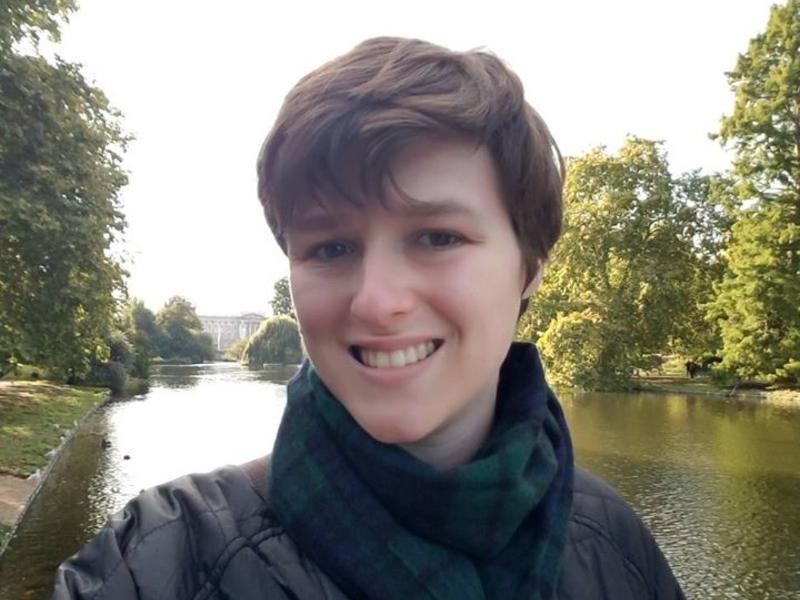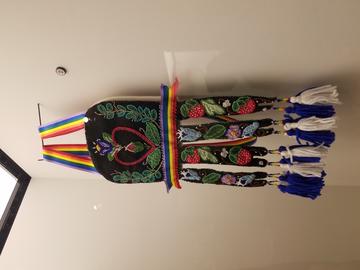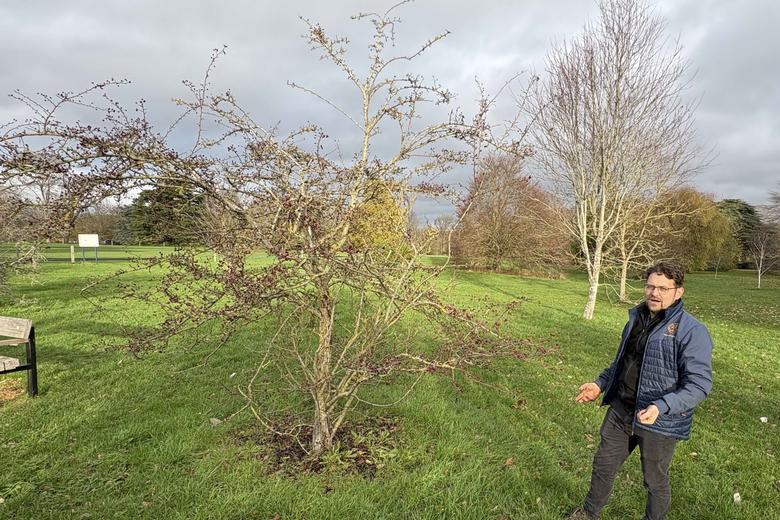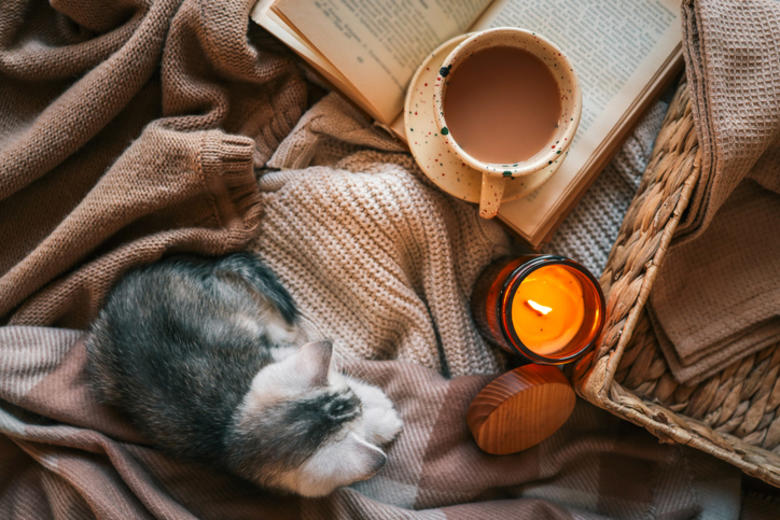ALUMNI STORIES: 'HOW MY QUEERNESS EXISTED BEYOND BOUNDARIES OF GENDER, SEXUALITY, AND COLONIALISM'

ALUMNI STORIES: 'HOW MY QUEERNESS EXISTED BEYOND BOUNDARIES OF GENDER, SEXUALITY, AND COLONIALISM'
Dan Laurin (Oriel, 2018) talks to us about his time at Oxford, being indigenous, transgender and queer plus working as a Community Curator with the Pitt Rivers
Published: 13 June 2022
Share this article
What inspired you to study at Oxford?
What inspired me to study Oxford was really the city itself—as a trained medievalist interested in history and the power of storytelling, Oxford seemed like the grand central point of so many narratives to explore. However, inspiration was a secondary feeling I had when I first made my application. I didn’t know my own worth back then, and sometimes I still can’t believe I was offered such a privileged position to study here, and I am thankful for all the people that supported me along the way.
What are some of your favourite memories of your time at Oxford?
I have so many wonderful memories at Oxford, both as a student and as a professional, so it’s quite hard to choose! I remember May Day being especially fun, wherein we would make flower crowns and stay up all night only to walk into the dim Oxford morning to hear the choir sing atop the Magdalen Tower. Or, perhaps witnessing the power of Chief Powhatan’s mantle, an early 1600s deer-hide and shell beaded cape on display in the Ashmolean Museum. I also looked forward to Wednesdays, when my course mates and I held movie nights chock full of terrible horror films and greasy pizza. However, my most favorite memory was being married to my now husband Ciaran in the heart of Oxford with a close group of friends and family on a lovely crisp November day.
You did your Masters in Medieval Studies, tell us a bit about your work and where you’re focusing now.
At the University of Oxford, I completed my Masters in Medieval Studies, which was a big achievement for me and nurtured my acceptance as a published researcher in several medievalist journals. My interest in medieval history led me to develop thoughts on masculinity, gender, monstrosity, and corruption within the Icelandic sagas. However, now I read medieval literature purely for fun as my attention has turned back to Museum Studies and Public Programming. When working for the Smithsonian Institution, I developed a passion for community outreach, visitor accessibility, and the decolonization of the curatorial process. As such, my current work focuses on ensuring our public heritage institutions—within the United Kingdom and abroad—are used more diversely, communally, and creatively to suit the needs of a local and global audience.
Currently, I am working within the museum sector as a tour guide for the Beyond the Binary exhibitions housed at the Pitt Rivers Museum where we explore the whole of LGBTQ+ lives within and outside Oxford. Additionally, I work as an Evening Events Assistant with a wonderfully charismatic team at the Ashmolean Museum where we showcase the many beautiful aspects of the museum after regular hours for events. Through these past and recent experiences, I have been able to assist several museums along their journey to becoming multifaceted places of community, education, and joy.
Outside of your primary work you were a Community Curator for the Beyond the Binary exhibition at the Pitt Rivers can you tell us more about that?
As a Community Curator for the Pitt Rivers Museum, I assist the development and delivery of activities, events, and tours focused on the Beyond the Binary exhibition housed at the museum for a diverse range of audiences and interests. Part of my duties were to research American Indian collections, occasionally teach workshops, lead tours, and help to represent the project at events including the 2019 Late Night: Diversity Program, 2019 London Metropolitan Archives Queer Archives Conference, 2022 LGBT History Month Celebration, and Oxford Pride 2022. I have been fortunate to gain a variety of skills in areas that I previously found intimidating including webinar development, podcasting, filming, and creating activities to hold the interest of our younger visitors! I am additionally a GLAM Collections Volunteer wherein I research, handle, and share the stories of unique artefacts for visitors to engage with.

Working with the Pitt Rivers Museum to develop the wildly popular Beyond the Binary exhibition has been such a wonderful opportunity. The project aimed to move away from the idea that LGBTQ+ histories didn’t exist or were a new trend or western invention. The exhibition provides a space for everyone regardless of their gender or sexuality to explore a variety of stories and histories told from the LGBTQ+ perspective locally and globally and I was extremely proud to be involved in. Recently, the Beyond the Binary exhibition was shortlisted for the 2022 Vice-Chancellor’s Diversity Awards and has now become the most visited Pitt Rivers temporary exhibition.
However, our work was also decolonial in nature. I myself contributed curatorial insight for the project, especially with the Indigenous Power: Countering Colonialization gallery. I worked with archived Indigenous Métis beadwork from my ancestral community and created a new rainbow beaded bag in conversation with an 1840’s Bandolier bag known as accession number 1893.67.183. The project discussed my identity as a Native transgender gay man and how my queerness existed beyond boundaries of gender, sexuality, and colonialism. It was incredibly important for me to assist the curation a panel dedicated to queer stories outside the western binary, ones that predate settler contact or even identities that survive them.
As a member of the LGBT+ community why do you think the exhibition is important?
While this project is a small step towards honoring and representing gender and sexual diversity, I think it proposes an important and much needed precedent. A majority of museums in the past have at the best of times simply ignored LGBTQ+ narratives within their collections, or at the worst of times actively maligned them. This exhibition, in addition to tentative others cropping up within the UK and abroad, help to give the power and narrative back to the queer community.
This exhibition at its heart attempts to tell “queer lives whole,” the struggle with the resilience, the despair with the joy. The stories we share and tell are interpreted and highlighted by experts—queer community members who worked together to ensure this space could not only educate but boldly declare our enduring existence.
Personally, I think this project was revolutionary for inviting so many global and community artists, activists, and academics to choose the conversations they wished to highlight and to work freely with the archival material. The Pitt Rivers Museum respected us Community Curators as experts within our own community, while also leaving room for a variety of stories influenced not only by gender and sexuality but also intersected by class, race, religion, time, and locality.
You’re not only a member of this community but also part of the Indigenous people, how has this impacted you?

My indigeneity as a member of Métis Nation informs my identity as a queer person, and I’m thankful for that. The Métis are a recognized Indigenous group in what is now known as Canada and are famous for their firm devotion to independent sovereignty and gorgeous floral beadwork inspired by their First Nations and European ancestry. Growing up, I was taught by settler culture that to be a man is to be masculine, closed off, and to detest the feminine. To be Métis is to be fluid as we are a complex hybrid identity made stronger by our ability to work beyond binaries. We are known as the flower beadwork people and so I wear bright florals with pride even if others might think it “feminine.” I learned stories of strong women and sensitive men, I learned of honoring our culture by honoring ourselves. Instead of tearing myself apart because of my nonconventional sexuality and gender, I honor it by identifying as Two-Spirit, a term coined by queer Indigenous people for queer Indigenous people.
Being an Indigenous person and working within museums can be a fraught journey. Luckily, I have worked for a variety of museums made by originating communities and work adamantly for those aforementioned communities. It is important for me that the museum field acknowledges its colonial roots and put in the work to reevaluate their collections and extend the invitation to source-communities to work in partnership with the preservation, interpretation, and if necessary, the repatriation of cultural material. Ultimately, it is flattering that museum visitors will see my queer beadwork within the exhibition while being reminded of the vital fact that we the Indigenous peoples of North America are still present. We are always in the process of asserting our voices through the reclamation of these objects' histories and reminding the viewer that we are still here and as multi-varied and complex as ever.
How has Oxford changed you?
Oxford has made me more appreciative of community—those networks of people that check in on you, that love you, that care for you and open themselves up. I am living far from home, far from my family and my Nation. However, I have met so many inspiring people and am fortunate enough to call them my dearest friends. Oxford has also given me the chance to acknowledge that I can help my community and change the way collections are interacted with and perceived in deeply impactful ways.
WATCH OUR 360 TOUR OF THE EXHIBITION
https://www.youtube.com/embed/W-sIQ0dOLKA















